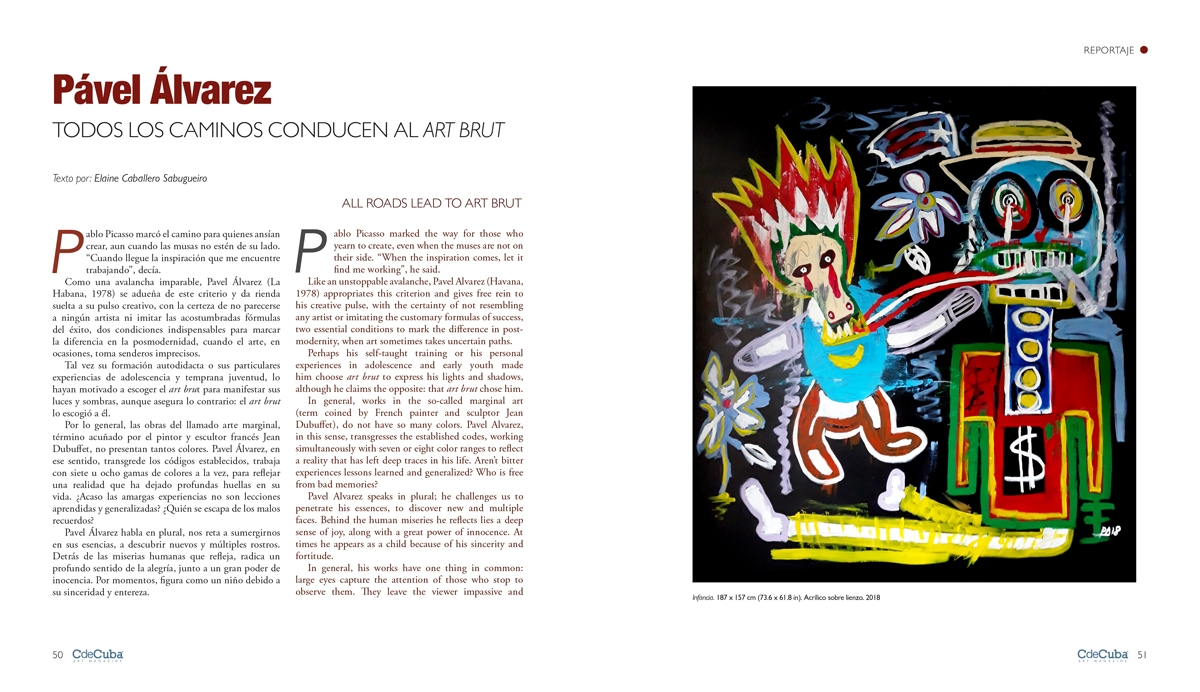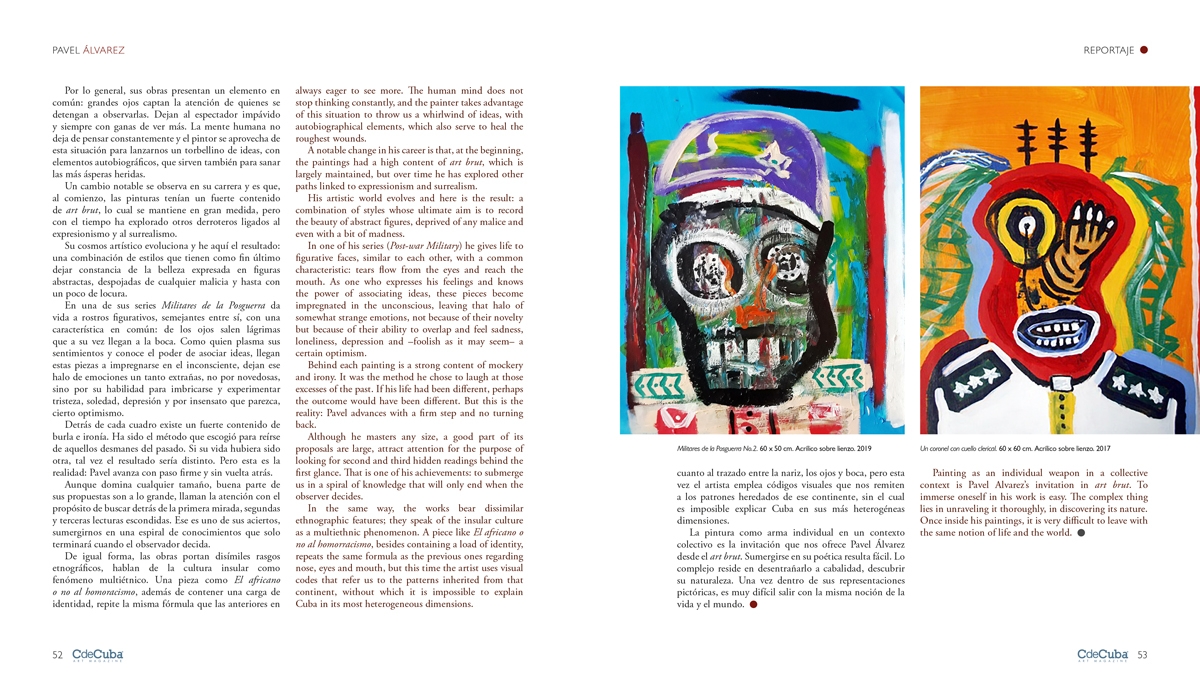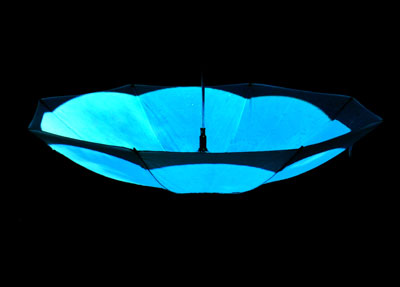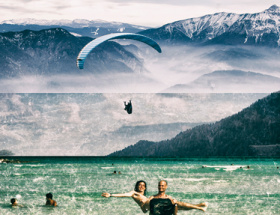[vc_row][vc_column][vc_column_text]
All Roads Lead to art brut
By Elaine Caballero Sabugueiro
Pablo Picasso marked the way for those who yearn to create, even when the muses are not on their side. «When the inspiration comes, let it find me working”, he said.
Like an unstoppable avalanche, Pavel Alvarez (Havana, 1978) appropriates this criterion and gives free rein to his creative pulse, with the certainty of not resembling any artist or imitating the customary formulas of success, two essential conditions to mark the difference in post-modernity, when art sometimes takes uncertain paths.
Perhaps his self-taught training or his personal experiences in adolescence and early youth made him choose art brut to express his lights and shadows, although he claims the opposite: that art brut chose him.
In general, works in the so-called marginal art (term coined by French painter and sculptor Jean Dubuffet), do not have so many colors. Pavel Alvarez, in this sense, transgresses the established codes, working simultaneously with seven or eight color ranges to reflect a reality that has left deep traces in his life. Aren’t bitter experiences lessons learned and generalized? Who is free from bad memories?
Pavel Alvarez speaks in plural; he challenges us to penetrate his essences, to discover new and multiple faces. Behind the human miseries he reflects lies a deep sense of joy, along with a great power of innocence. At times he appears as a child because of his sincerity and fortitude.
In general, his works have one thing in common: large eyes capture the attention of those who stop to observe them. They leave the viewer impassive and always eager to see more. The human mind does not stop thinking constantly, and the painter takes advantage of this situation to throw us a whirlwind of ideas, with autobiographical elements, which also serve to heal the roughest wounds.
A notable change in his career is that, at the beginning, the paintings had a high content of art brut, which is largely maintained, but over time he has explored other paths linked to expressionism and surrealism.
His artistic world evolves and here is the result: a combination of styles whose ultimate aim is to record the beauty of abstract figures, deprived of any malice and even with a bit of madness.
In one of his series (Post-war Military) he gives life to figurative faces, similar to each other, with a common characteristic: tears flow from the eyes and reach the mouth. As one who expresses his feelings and knows the power of associating ideas, these pieces become impregnated in the unconscious, leaving that halo of somewhat strange emotions, not because of their novelty but because of their ability to overlap and feel sadness, loneliness, depression and –foolish as it may seem– a certain optimism.
Behind each painting is a strong content of mockery and irony. It was the method he chose to laugh at those excesses of the past. If his life had been different, perhaps the outcome would have been different. But this is the reality: Pavel advances with a firm step and no turning back.
Although he masters any size, a good part of its proposals are large, attract attention for the purpose of looking for second and third hidden readings behind the first glance. That is one of his achievements: to submerge us in a spiral of knowledge that will only end when the observer decides.
In the same way, the works bear dissimilar ethnographic features; they speak of the insular culture as a multiethnic phenomenon. A piece like El africano o no al homorracismo, besides containing a load of identity, repeats the same formula as the previous ones regarding nose, eyes and mouth, but this time the artist uses visual codes that refer us to the patterns inherited from that continent, without which it is impossible to explain Cuba in its most heterogeneous dimensions.
Painting as an individual weapon in a collective context is Pavel Alvarez’s invitation in art brut. To immerse oneself in his work is easy. The complex thing lies in unraveling it thoroughly, in discovering its nature. Once inside his paintings, it is very difficult to leave with the same notion of life and the world.
[/vc_column_text][/vc_column][/vc_row][vc_row][vc_column][vc_column_text]
[/vc_column_text][/vc_column][/vc_row]




